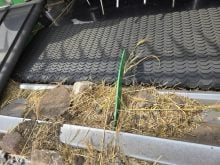The humble bumblebee, one of the best pollinators on the planet, is slowly disappearing, according to a Manitoba farmer.
Along with the disappearance of the bumblebee may be our food source, wrote Larry Powell of Roblin, Man., in his farming blog.
“Could half of our food supply actually be at risk now?” wondered Powell, an organic vegetable grower, in his Earthkeeper farm blog.
“While the sad state of honeybees worldwide has now been well documented, much less attention has been paid to their ungainly cousins, the bumblebees. They too are declining at an alarming rate and have been for at least a decade, possibly longer? But only recently have details of their predicament begun to emerge,” he wrote.
Read Also

New wheat varieties offer Prairie farmers jump in yield
Three experimental wheat varieties developed by Agriculture Canada are showing yield increases of eight to 15 per cent over AAC Brandon wheat in registration trials.
Ralph Cartar, associate professor of biology at the University of Calgary who studies bumblebees, said the decline is caused by a combination of problems including agricultural pesticides, parasites on imported bumblebees for greenhouse pollination and honeybees encroaching on bumblebees’ native habitat.
“The problem is we’re losing certain species of bumblebees,” said Cartar.
“Bumblebee biodiversity is in trouble.”
Among the main culprits are bumblebees brought to a region to pollinate greenhouse crops. Little effort is made to keep the bees contained in the greenhouse and bees that escape can be loaded with parasites, which wipe out native bumblebee populations, he said.
A major victim is bombus occidentalis, or western bumblebee. It was once common in the western United States and Canada and is now nearly disappeared. The Franklini bumblebee, a close relation, has also declined.
“It looks like we’ve lost one species and at risk of losing another,” said Cartar.
A third species, the terricola, once common in Western Canada, is also being studied to see how it is surviving the additional competition.
Bumblebees in Eastern Canada are faring no better, Cartar said.
In addition to parasites, several other factors play into the decline of native bumblebee populations.
Cartar and his students have studied the impact of forest cutting practices. Bees congregate on native, uncut areas and leave the flowers regrowing in logged areas. The disproportionate number of bees on uncut areas affect the bee’s food supply and the forest growth.
Other research in the Peace River region of Alberta showed canola fields surrounded by at least 30 percent native area have 30 percent higher yields.
“If there’s lots of nonagricultural habitat there are much better yields,” he said.
Pesticides to control other insects have also had a significant impact on bumblebees in fruit growing areas of southern B.C. Native bumblebees have been wiped out and imported honeybees brought in to do the needed pollination.
The bumblebees’ fuzzy bodies make them better pollinators than the imported honeybee, but sheer numbers mean honeybees can get the job done. Bumblebees are not good honey producers.
“If we lose honeybees then we need native bees to step in, but we really have mistreated native bees,” Cartar said.














